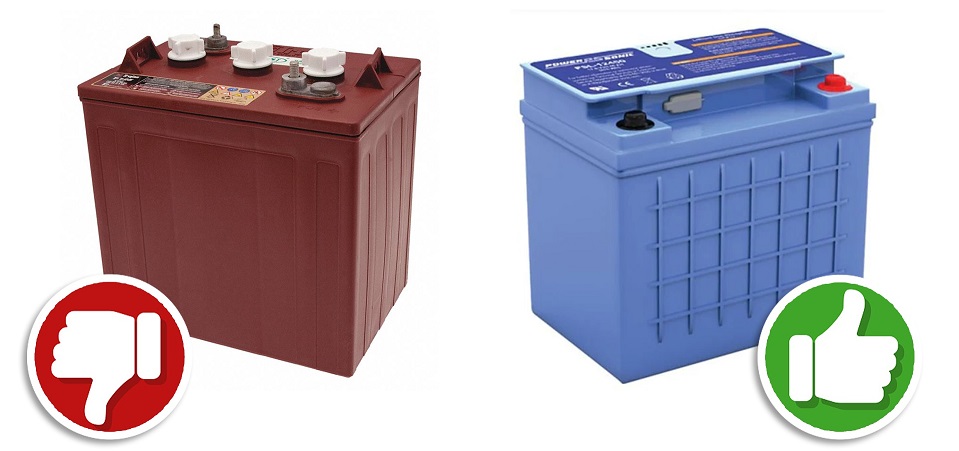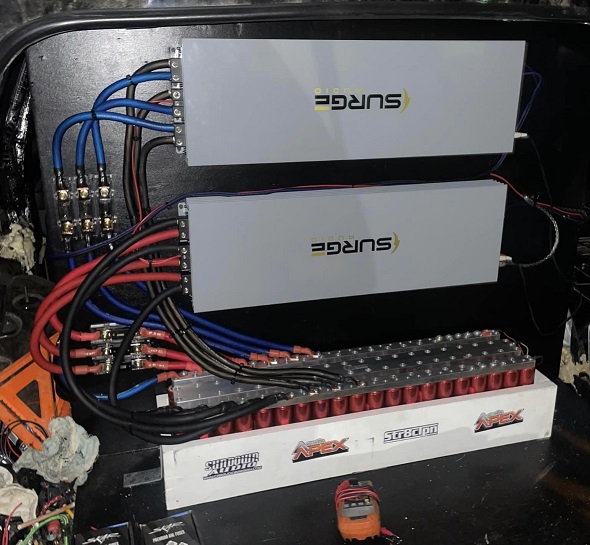
Can I Swap Out My AGM Batteries With Lithium?
Table of Contents
Yes, you can swap out AGM batteries with lithium. The best lithium chemistry for such a task is LFP because 4 of those cells in series produce a voltage curve that closely resembles a 12V lead acid battery.
AGM (Absorbent Glass Mat) batteries are a type of lead-acid battery that provides relatively high power for short periods. They are commonly used in vehicles and UPS systems where high surge currents are a necessity. Lithium batteries are popular for their lightweight, high energy density, and longevity, making them a favored choice for many applications ranging from smartphones to electric vehicles.
The Feasibility of Swapping AGM Batteries with Lithium
When considering whether to swap AGM batteries with Lithium ones, there are several factors to keep in mind. Lithium batteries have different voltage characteristics and charging requirements than AGM batteries. They require a BMS (battery management system) to prevent the cells from overcharging, discharging, and overheating. So, you would need to make sure your existing charging system is compatible before you replace a lead acid battery with a lithium one.
Benefits of Swapping AGM to Lithium Batteries
There are many advantages to switching from AGM to lithium batteries. Lithium batteries offer a much deeper depth of discharge (DoD) than AGM batteries. While AGM batteries are recommended to be discharged only to about 50% to maintain their lifespan, lithium batteries can be discharged up to around 80%, effectively providing more usable capacity.
Lithium batteries are more energy-efficient, meaning they lose less energy in the charge/discharge process. Also, lithium batteries have a longer lifespan than AGM batteries, often providing thousands of cycles before their capacity starts to degrade significantly.
Challenges and Considerations in Replacing AGM with Lithium Batteries
The transition from AGM to Lithium can be complicated when dealing with NMC chemistry. When using LFP technically, the process is much more straightforward. The upfront costs for lithium batteries are higher than for AGM batteries, and retrofitting existing systems for lithium compatibility can add to these costs. Lithium batteries, however, will always have a lower TCO (Total Cost of Ownership) because of their many benefits.
Lithium batteries generally have a longer lifespan than their lead-acid counterparts, but that lifespan can be significantly impacted by extreme temperatures, which AGM batteries are a whole lot less sensitive to. Also, because lithium-ion batteries have such a low resistance and are so much more efficient than AGM batteries, there is more risk of thermal runaway.
How Do I Convert My AGM System To LFP?
Because a 4S LFP battery has almost an identical voltage curve as a 12-volt lead acid battery, the only thing you need to change is the charge controller. This, of course, only applies if you are using LFP chemistry. If you plan on replacing your AGM batteries with NMC-based lithium batteries, then you will have to do more work than that as there will likely be a voltage discrepancy somewhere along the line. For example, people will use (headway) 38120 cells in 4s configuration for car audio applications.
Battery Cycle Life Comparison
The cycle life of a battery is the number of complete charge/discharge cycles a battery can handle before its capacity is significantly reduced. Lithium batteries have a much longer cycle life than AGM batteries. For example, a good quality AGM battery may last for about 300-800 cycles, while an LFP-based lithium battery can last for over 2000 cycles, and in some cases, even up to 5000 cycles if you really baby it.
Sizing and Weight Considerations
Lithium batteries are more compact and lighter than AGM batteries, which can be a significant advantage in applications where space and weight are at a premium. With a lithium battery, you don’t need a lot of weight to store a lot of power. For example, an AGM battery would need to weigh about 30 pounds to store 1000 watt-hours. In contrast, that same amount of energy can be stored in about 9 pounds of NMC lithium battery.
It’s the same thing for space. With a lithium battery, you can't store much more energy in the same space. For example, an AGM battery would have to take up 0.24 cubic feet of space to store 1000 watt-hours. An NMC lithium battery can store that same amount of energy in 0.14 cubic feet.




